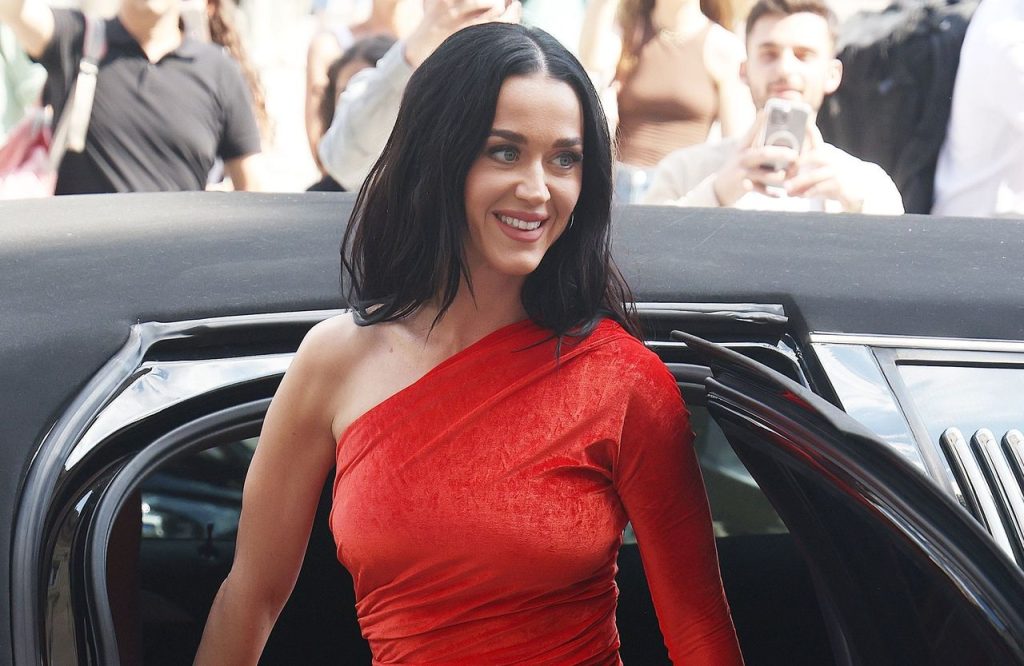Why Katy Perry’s comeback has gone so wrong
3 min read
Katy Perry arrives at The Ritz Hotel in a stretch limousine during the Haute Couture Fall/Winter 2024/25 as part of Paris Fashion Week on June 25, 2024 in Paris, France.

Katy Perry arrives at The Ritz Hotel in a stretch limousine during the Haute Couture Fall/Winter 2024/25 as part of Paris Fashion Week on June 25, 2024 in Paris, France.
Katy Perry, once a reigning pop icon, now faces an uphill battle with her latest album, 143. Despite her legacy of chart-topping hits, her recent releases have been mired in controversy and lackluster performance, raising questions about her relevance in today’s music landscape.
The allure of a comeback is a compelling narrative in pop culture, echoing stories of legendary figures like Judy Garland and Cher. However, Perry’s current situation highlights the harsher reality of failed comebacks, serving as a reminder that success is never guaranteed. As she releases 143, the challenges are evident. The album’s lead single, “Woman’s World,” peaked at a disappointing 63 on the Billboard Hot 100, while its follow-up, “Lifetimes,” barely scraped into the Billboard Bubbling Under Hot 100 at 15.
Critics and fans alike are perplexed as to why her new music isn’t resonating. Hugh McIntyre, a music journalist, emphasizes that Perry’s stature makes her recent failures particularly noteworthy, igniting conversations about her artistic direction. The troubles began with “Woman’s World,” which Perry intended to convey an empowering feminist message. Yet, its rollout sparked debate, especially due to her choice of collaborator: producer Lukasz Gottwald, known as Dr. Luke.
While Perry has enjoyed considerable success with Dr. Luke in the past, his contentious history—marked by legal battles with singer Kesha over allegations of abuse—has complicated perceptions of their collaboration. Although Perry has refrained from directly commenting on this dynamic, many feel her partnership with him undermines her feminist messaging.
The backlash against her decision to work with Dr. Luke is compounded by the song’s simplistic lyrics, which some view as reductive. Perry has often favored accessible, catchy lines, but in today’s climate, where authenticity is prized, her approach feels outdated. Critics argue that the lyrical themes do not adequately reflect the complex realities of modern womanhood, especially when compared to emerging artists like Charli XCX, who tackle nuanced issues with authenticity.
Perry’s music video for “Woman’s World” further ignited criticism, with visuals that some interpreted as catering to the male gaze. Her attempt to use satire in the imagery did little to quell the backlash, highlighting a disconnect between her artistic intentions and audience reception.
Despite the controversies, Perry has not shied away from her ambition to reclaim her status in pop culture. 143 was heralded as a “sexy, fearless return,” aiming to echo the success of her earlier albums, One of the Boys and Teenage Dream. Yet, as she navigates the landscape of a vastly different music industry—one shaped by streaming and social media—her formula appears misaligned with current trends.

Industry observers point to ageism and misogyny as potential factors impacting Perry’s comeback. At 39, she confronts a landscape that can be unforgiving to female artists as they age. The narrative surrounding women in music often shifts dramatically once they reach a certain age, with audiences sometimes viewing them as out of touch.
Even with these challenges, it’s crucial not to underestimate Perry’s resilience. She has proven her ability to reinvent herself, emerging from initial setbacks in her career as a polished pop star. Furthermore, her acknowledgment of past missteps, such as those related to her breakout hit “I Kissed a Girl,” suggests she possesses the self-awareness necessary for growth.
As she continues her journey with 143, Perry faces a pivotal moment that could redefine her trajectory. Should she engage with the criticisms levied against her, particularly regarding her collaboration with Dr. Luke and the messages in her music, she might find a path back to relevancy. A more reflective and adaptable approach could enable her to craft songs that resonate with contemporary audiences, allowing her to reclaim her place in the ever-evolving pop landscape.